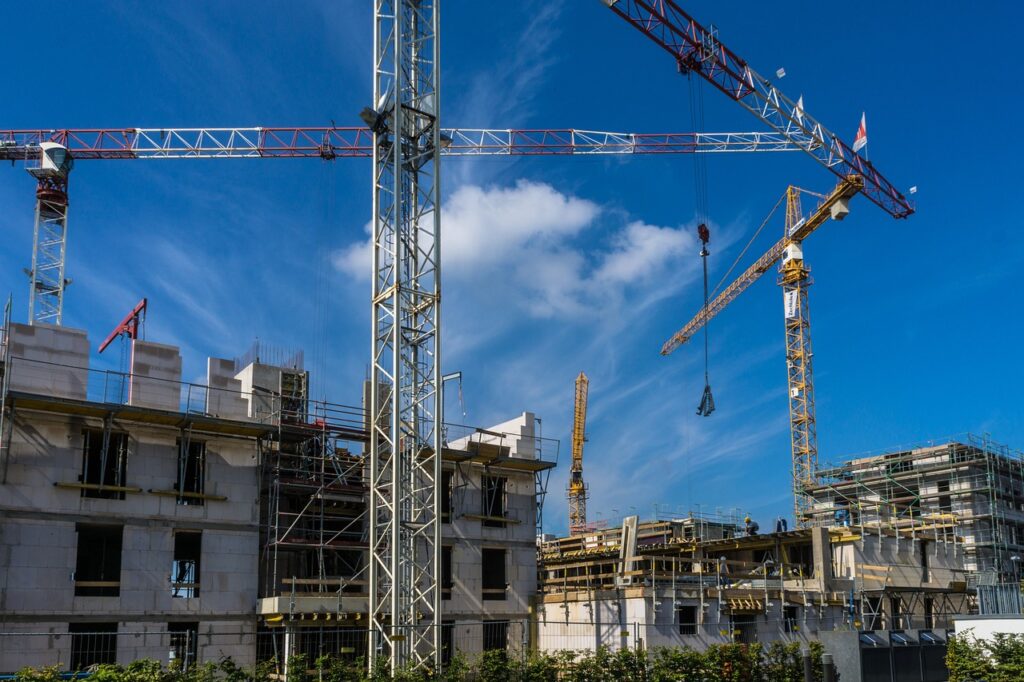The space of Engineering, Procurement, and Construction is fast-paced and project managers often handle increasingly complex challenges. The increasing size and intricacy of projects often make traditional management methods obsolete. It fails to maintain efficiency and control costs. This is where lean construction principles can change EPC project delivery.
It has the ability to reshape the workflows of a project, optimize the use of resources, and also strengthen team collaboration. This article dives into the core principles of lean construction and reflects on how it can find application in EPC, improving project results and setting new standards in the industry.
Lean Construction Principles: Value Stream Mapping in EPC Projects
Value Stream Mapping (VSM) is one of the core practices of Lean Construction principles that can enhance efficiency in EPC projects. In this section, we explore several ways VSM contributes to bottlenecks’ detection, waste reduction, and process optimization in complex EPC projects.
Identification of Non-Added Value Activities
VSM on EPC projects takes an exhaustive examination of every stage of the project’s life cycle. This is to identify activities that do not add value to the final product. So, it includes things such as long, unnecessary wait times between phases of a project, redundant approval processes, and unnecessary material movements. Furthermore, mapping these out can help the project manager identify waste of time or resources. They can then target improvements to bring down the duration and cost of the project. Moreover, the process analysis helps to discover untimely inefficiencies such as over-processing or excessive inventory. These might not come to light in the traditional old style of management. This becomes one of the major benefits of lean principles in engineering, procurement, and construction management
Enhancing Communication and Coordination
VSM in EPC serves as a powerful communication tool. It creates a shared visual representation of the flow of the project. As a result, this enhances understanding across engineering, procurement, and construction phases, breaking down silos between departments. Moreover, the visual nature of VSM in lean construction principles makes complex processes accessible to all stakeholders. It fosters better collaboration while helping identify interdependencies between various project phases. VSM aids in excellent conferencing and decision-making across the various phases of projects and diverse teams. This is through common language and common reference points.
Improvement in Resource Allocation
VSM enhances project managers’ perspectives regarding EPC resource requirements across project phases. Furthermore, such an all-round perspective enables better utilization of human, hardware, and material resources. By understanding the entire value stream, managers can discern when and where to make resources available reducing idle time with increased productivity. Moreover, potential resource conflicts or bottlenecks in the project lifecycle can be identified early on. It enables proactive changes either in schedules or strategies in procurements to keep projects running as smoothly and costly delay away.
Lean Construction Principles: Just-In-Time Delivery and Pull Planning
Some of the most important Lean construction principles in transforming the execution of EPC projects include Just-In-Time (JIT) delivery and Pull Planning. This section explores how implementing lean construction in EPC projects adds to improved project flow and efficiency.
Elimination of Material Waste and Storage Cost Reduction
Just-in-time delivery in EPC projects significantly reduces on-site inventory and associated storage costs. Furthermore, it ensures materials and equipment arrive on site only when they are needed for installation or usage. Moreover, storage time minimization reduces the risk of material damage, loss, or obsolescence. JIT also enhances cash flow management as material purchases are delayed as long as possible before they become necessary. Additionally, this lean approach to material management not only cuts direct storage costs but also reduces the need for large laydown areas. As a result, it simplifies site logistics and cuts the potential for theft or vandalism of stored materials.
Improving Site Logistics and Safety
Pull Planning helps to elevate site logistics and safety in EPC projects. It works backward from the project milestones towards identifying the best sequence of tasks. So, this reduces the risk of congestion at sites, lowers the potential for accidents due to overcrowding, and prepares work areas before the teams arrive. Pull Planning also enhances the coordination of various trades and subcontractors with respective others. This reduces possible conflicts and thereby productivity at a site.

Developing Project Flexibility and Responsiveness
JIT and pull planning make an EPC project much more responsive to alteration. With lean inventories and flexible schedules, the types of projects can easily accommodate design changes, updating of new regulations, or market fluctuations. Furthermore, in construction, the setting can be dynamic and indeed prone to alteration. So faster change in situations like this makes it very relevant. Additionally, the flexibility of these approaches enables the project teams to quickly change directions in case of unanticipated challenges. So, it thereby limits disruption effects on project timelines and budgets.
EPC Streamline Procurement
Streamlining procurement through JIT and Pull Planning can lead to better integration of the actual needs of the project with procurement. It minimizes lead time, minimizes excess inventory, and builds stronger bonds between the buyer and supplier. This creates more accurate forecasting and can lead to better negotiation of terms with suppliers. It also reduces the chances of obsolescence and the costs of overstoring.
Lean Construction Principles: Continuous Improvement and Kaizen in EPC
Continuous improvement, or Kaizen sits at the core of lean construction principles. Kaizen can enable remarkable improvements in EPC project management. This section explores how Kaizen develops an attitude of continuous refinement and innovation in EPC projects.
Enabling the Workforce
Kaizen in EPC Projects empowers every employee on a job site from foremen to front-line workers to identify and propose opportunities for improvement. Furthermore, this bottom-up approach uses the working knowledge of people closest to the work. So, it allows for some innovative solutions that the management might not have taken into consideration. Moreover, by valuing and implementing suggestions from employees, firms can boost morale and engagement. This, in turn, increases productivity and quality. Additionally, empowerment creates a sense of ownership amongst workers and makes them take responsibility for solving problems and optimizing processes
Applying Small, Incremental Changes
EPC with the Kaizen approach prefers small step changes rather than the usual massive overhaul. Accumulating many small improvements can eventually lead to large improvements in both efficiency and the quality of projects. Furthermore, this methodology is especially suited to ongoing projects under EPC. This is where large changes can cause disruption in business operations for a substantial period. Moreover, with small and manageable changes, teams can continuously develop processes without drastically disrupting work in progress. This technique under lean construction principles also allows for quick testing and validation of new ideas without higher risks that come with major, far-reaching changes.
Promoting a Learning Culture
Continuous improvement in EPC projects is beneficial for building a learning and adaptable culture. By regularly reviewing processes and outcomes, teams can determine lessons learned and best practices. So, this can be used in future projects, thus creating an ongoing cycle of improvement around the organization. This helps EPC firms to be on top of emerging industry trends and advancements in technologies. Moreover, this learning culture encourages innovation, encourages knowledge sharing between various project teams. It also aids in developing stronger and more efficient project management practices over time. Additionally, it helps in the development of the employee and retention.
Data-Driven Decisions
Data-driven decision-making finds emphasis when it comes to Kaizen in EPC projects. Furthermore, teams can collect and analyze data on various aspects of projects for decisions on where to focus improvement efforts. This kind of data-centric approach ensures that effort at improvement is focused and effective. As a result, it maximizes return on investment in process enhancement initiatives. It provides objective measurement to critically evaluate the change implemented. It also helps in identifying trends or patterns that would not have come out from immediately available data. Additionally, the technique fosters a more analytical and less subjective approach to project management.
To Sum Up
The implementation of Lean Construction principles in EPC project management represents a meaningful step toward efficient value-driven delivery of projects. Complex challenges can now be addressed by EPC firms with agility and effectiveness, embracing Value Stream Mapping, Just-In-Time delivery, Pull Planning and Continuous Improvement. All these reduce wastefulness, enhance efficiency, and promote a spirit of collaboration and continuous learning. With the evolution of the construction industry, using lean construction principles will become more important. This is to stay competitive and deliver successful projects.
To learn about concepts like these in-depth, attend the American EPC & Project Management Summit 2024 in Houston, TX on October 24-25. This event will bring to the table the greatest minds in the industry to discuss high-end approaches to EPC project management. Register now!


